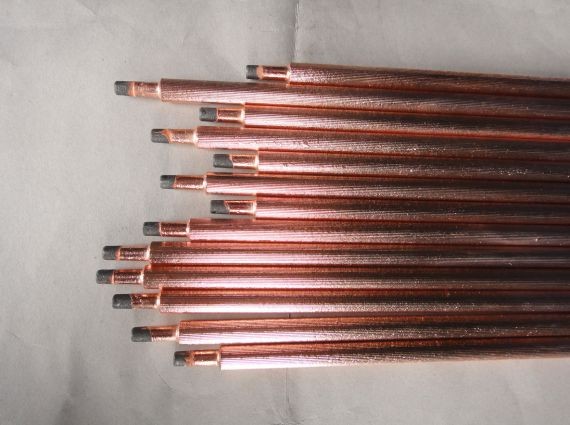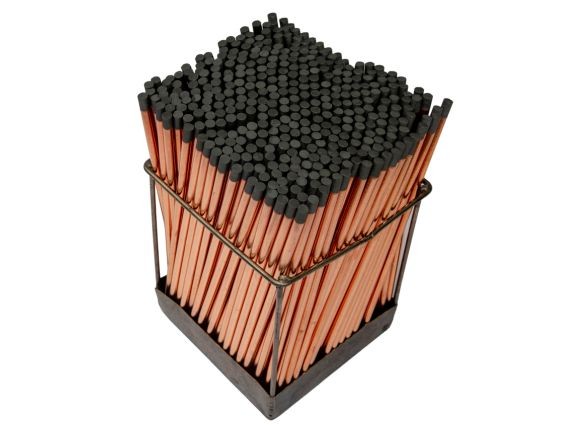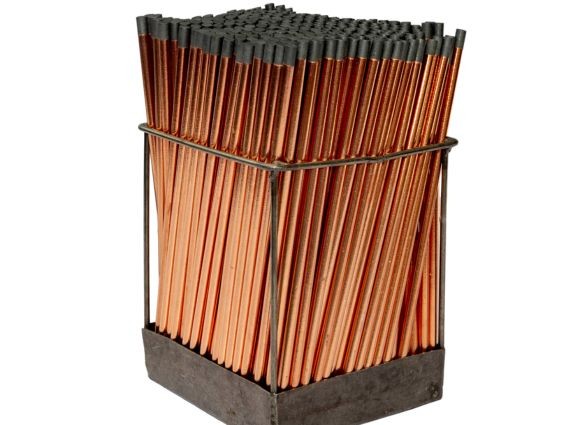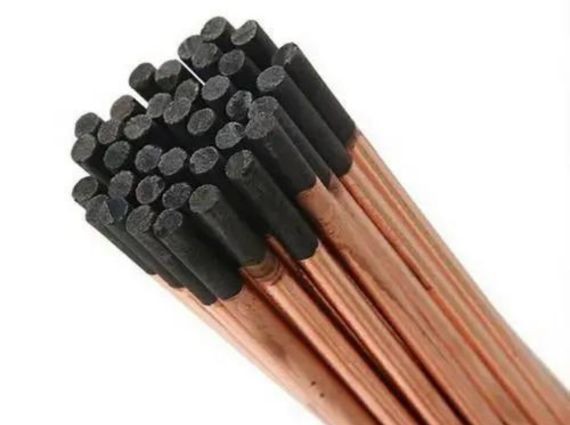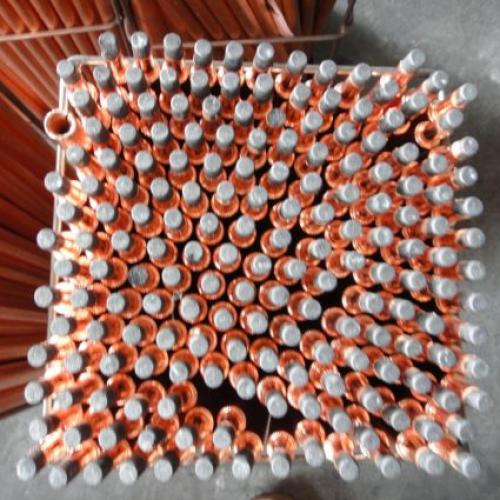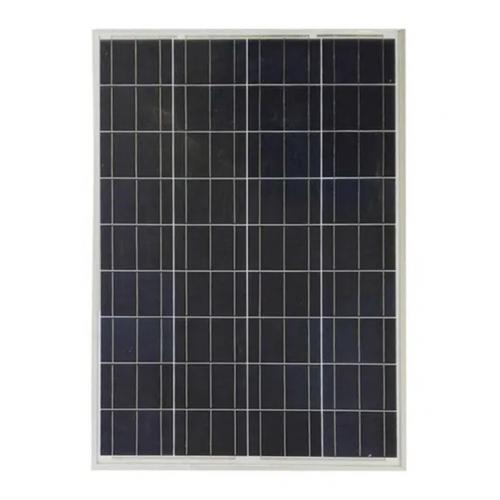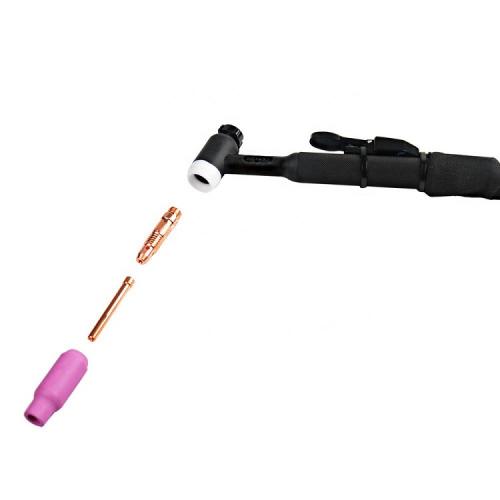| PART NO. | NJ & JOINTED |
| APPLICATION | GOUNGING CARBON RODS FOR CUTTING WELDING DEFECTS REMOVING, MAKING HOLES ETC. |
| LENGTH | 305MM/355MM/455MM/510MM |
| ANGLE | 3.2/4/5/6/6.5/7/8/9/10/11/12/13/16/19/25MM |
| DIAMETER | 5MM/8MM/10MM/12MM/15MM |
| CURRENT RANGE | 130-1600A |
| CERTIFICATION | ISO9001, CCC |
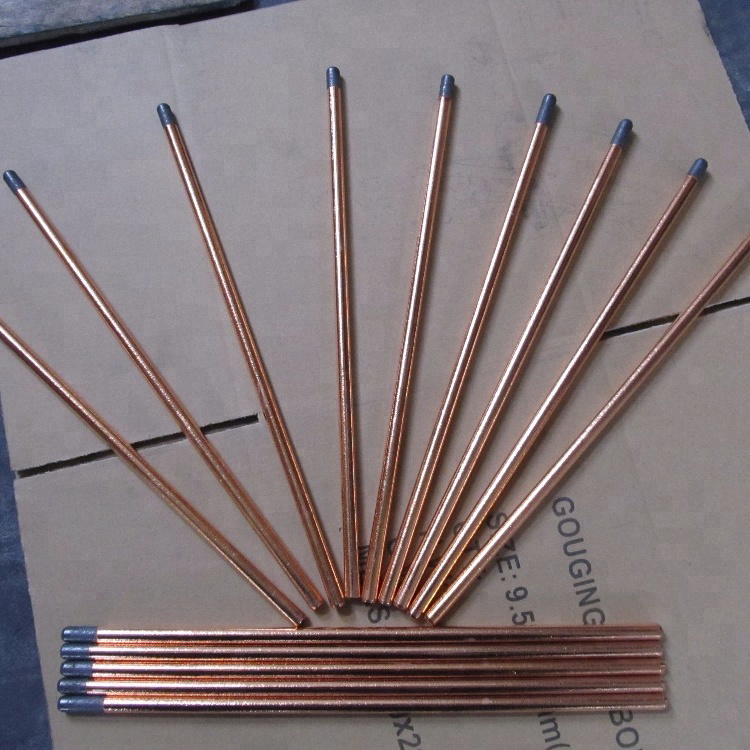
|
Diameter * Length ( mm ) |
Diameter * Length ( inches ) |
Current Range ( A ) |
|
3.2*305 |
1/8*12' |
130-180 |
|
4*305(355) |
5/32*12'(14') |
150-200 |
|
5*305(355) |
3/16*12'(14') |
200-250 |
|
6*305(355)(400)(455)(510) |
15/64*12'(14')(16')(18')(20') |
15/64*12'(14')(16')(18')(20') |
|
6.5*305(355) |
1/4*12'(14') |
320-370 |
|
7*355 |
9/32*14' |
350-400 |
|
8*305(355)(400)(455)(510) |
5/16*12'(14')(16')(18')(20') |
400-450 |
|
9*305(355) |
23/64*12'(14') |
450-500 |
|
9.5*305(355) |
3/8*12'(14') |
500-550 |
|
10*305(355)(400)(455)(510) |
3/8*12'(14')(16')(18')(20') |
550-600 |
|
11*305(355) |
7/16*12'(14') |
600-650 |
|
12*305(355) |
15/32*12'(14') |
750-850 |
|
12.7*305(355) |
1/2*12'(14') |
800-1000 |
|
13*305(355) |
1/2*12'(14') |
800-1000 |
|
16*305(355) |
5/8*12'(14') |
1000-1200 |
|
19*305(355) |
3/4*12'(14') |
1200-1400 |
Process description
Air carbon arc gouging works as follows. An electric arc is generated between the tip of a carbon electrode and the workpiece. The metal becomes molten and a high velocity air jet streams down the electrode to blow it away, thus leaving a clean groove. The process is simple to apply (using the same equipment as MMA welding), has a high metal removal rate, and gouge profile can be closely controlled. Disadvantages are that the air jet causes the molten metal to be ejected over quite a large distance and, because of high currents (up to 2000A) and high air pressures (80 to 100 psi), it can be very noisy.
Application
As air carbon arc gouging does not rely on oxidation it can be applied to a wide range of metals. DC (electrode positive) is normally preferred for steel and stainless steel but AC is more effective for cast iron, copper and nickel alloys. Typical applications include back gouging, removal of surface and internal defects, removal of excess weld metal and preparation of bevel edges for welding.
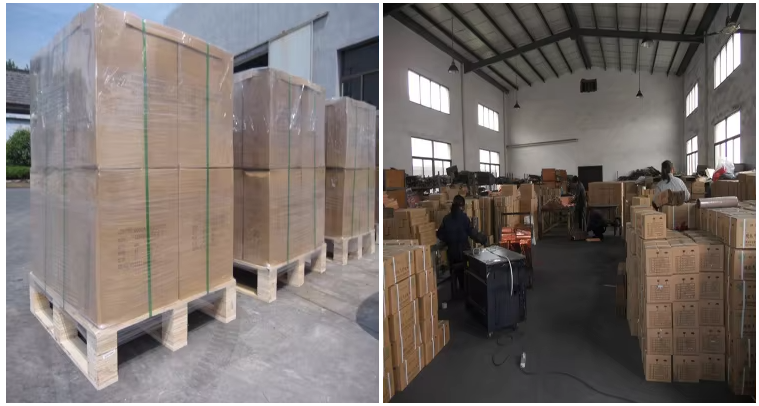

 MAGALA NEW ENERGY CO,.LIMITED
MAGALA NEW ENERGY CO,.LIMITED 